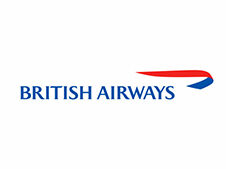Corporate controllers, CFOs and tax directors will have spent the last couple of months navigating their way through the various support measures available to their international operations.
As companies look beyond government announcements to longer term opportunities for support, how much can transfer pricing help when it comes to managing cash flow?
Is now the time to justify a change?
Recent OECD data on the economic effects of COVID-19 indicate that “the overall direct initial hit to the level of GDP is typically between 20-25% in many major advanced economies.”
The OECD likens the effects to that of the 2008 financial crisis. With the economic environment changing, many of the conditions used to define a company’s existing transfer pricing arrangements – such as expected forecasts and future profitability – have changed, so these decisions can be revaluated.
The case for adjusting transfer pricing policies will vary. Some companies will be able to make more substantial changes than others. Some may decide that no change is currently required and will simply continue to monitor this position as time goes on. For others, factors such as sectors, risk profile of each subsidiary and financial health of the wider group will all play a part in determining what degree of change is possible. The drivers and implications will, of course, be different for each group.
A good place to start is by asking yourself “what am I experiencing with third party suppliers or financers and could this be applied to my group relationships?”
We asked our clients to tell us about some of the changes they’re seeing with third party relationships and responses included:
- Customers being provided with longer credit terms for paying certain goods and services
- Companies that earn a fixed rate of return for work (such as distributors) reducing their margins
- Lenders relaxing their loan repayment terms
- Companies that normally pay royalties being awarded some level of deferral or payment holiday
Some of these changes may be suitable to replicate when determining a revised arm’s length approach for future intragroup work.
If we use an example of a subsidiary that is compensated by its parent company for the intragroup services it provides, the following situations may represent opportunities of economic rationale to review transfer pricing arrangements:
Fixed margin subsidiaries
This is not limited to but may include subsidiaries structured under “limited risk distributor” and “cost-plus” models.
The normal support these subsidiaries provide has been impacted and may be less valuable for the group during these times. Sales teams may have been furloughed, terminated or reassigned, entire offices closed, international customer care visits shelved – all of these will logically have an impact on the value of the service supplied.
The group may want to consider reducing margins or even eliminating them altogether as a way of preserving cash across the business.
Eliminating a mark-up might put the subsidiary into a loss making position and increase the overall losses shared by the group. This may have tax implications you need to consider and these could differ across each jurisdiction.
Intercompany loans
The transfer pricing rationale for changing the characteristics of a loan is many lenders in the open market now relaxing their own payment terms to support businesses.
The group may decide the best practice is to look at extending repayment terms, or even waiving or reducing the amount of interest arising on group loan balances. It may also need to enter into new loans with subsidiaries that need additional cash flow support.
This could generate an improved cash flow position for the payee company, but conversely it will reduce the cash position of the group company providing the loan.
Royalties
The group should look at the practicalities of amending any royalty arrangements. This is not always straightforward and a detailed review of the agreement is needed. Any adjustment would probably be in the form of reducing the royalty fee that is payable, or by waiving or deferring when payments are due.
In the middle of COVID-19, it may be possible to agree no further payments should be made until a specifically adjusted sales target has been met.
How do you make these changes?
Any decision taken needs to be with the authority of both payer and payee.
This should be straightforward but the main thing to focus on is documentation. Businesses should document every transfer pricing decision they make during (and as we come out of) the pandemic, together with an appropriate level of evidence or research. What is appropriate will depend on the countries concerned and if you have operations in more than one country. Being seen to ask for advice can be important evidence. Talk to your local tax advisors regularly and document discussions.
An audit trail of these discussions can be an effective way to support this change should a tax authority want to review your transfer pricing affairs.
Finally, it is important to note that companies must take steps to help preserve their financial health, but these need to be in the context of remaining compliant with tax authorities. Intragroup relationships are a useful tool when preserving cash, but they must be supported by local tax knowledge and appropriate evidence.
It doesn’t have to be difficult, just methodical and well documented.
If you have questions about your company’s Transfer Pricing arrangements, please contact Adam Dunnett :
Adam Dunnett
Senior Tax Manager
Tel: +44 (0)20 7430 5921
Email: adunnett@fitzandlaw.com












































